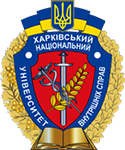Стан наукової розробленості проблематики використання спеціальних знань під час розслідування контрабанди
Анотація
У статті обґрунтовано, що контрабанда як суспільно небезпечне явище існує з моменту зародження перших державних утворень. Її появі сприяло бажання уникнути сплати митних зборів і переміщення товарів поза контролем державних органів. З’ясовано, що з метою протидії контрабанді в різні історичні періоди запроваджувалися відповідні правові заходи. Визначено, що в новітній період розвитку правових засад протидії злочинності, наукових основ такої діяльності вже неодноразово приділялася увага проблематиці забезпечення ефективного розслідування кримінальних правопорушень, пов’язаних із контрабандою. Водночас окремі дослідження все ж таки не відповідають чинним доктринам кримінального права і кримінального процесу, а деякі з них містять лише описові рекомендації щодо типових видів судових експертиз, що проводяться під час розслідування. Констатовано, що сучасний рівень криміналістичного забезпечення проблематики використання спеціальних знань, техніко-криміналістичного забезпечення розслідування кримінальних правопорушень, пов’язаних із контрабандою, є недостатнім, а наукові пошуки в межах окресленого предмета потребують активізації.
Завантаження
Посилання
Shevchuk, V. M. (2002). Use of special knowledge in smuggling investigations: problems and solutions. Bulletin of the Academy of Customs Service of Ukraine, 2(14), 29–35.
Furman, Ya. V. (2014). Current issues of using special knowledge in the investigation of criminal encroachments on cultural property, works of art, and antiques. European Perspectives, 6, 151–156.
Maliuha, R. V. (2014). Expertise as a means of proof in criminal proceedings concerning the smuggling of narcotic drugs, psychotropic substances, their analogues or precursors or counterfeit drugs. Forum of Law, 4, 210–215. http://nbuv.gov.ua/j-pdf/FP_index.htm_2014_4_38.pdf.
Buha, A. Yu. (2020). Methods of investigation of crimes associated with drug trafficking [Doctor of philosophy dissertation, National University “Odessa Law Academy”].
Dorofeieva, L. M. (2024). Customs security of Ukraine: prospects for increasing the level of protection of interests. Uzhhorod National University Herald. Series: Law, 3(84), 95–101. https://doi.org/10.24144/2307-3322.2024.84.3.15.
Tymoshenko, A. V. (2021). Characteristics of modern smuggling schemes. Scientific Notes of the University “KROK”, 2(62), 109–114. https://doi.org/10.31732/2663-2209-2021-62-109-114.
Shevchuk, V. M. (2003). Methodology of smuggling investigation: problems of theory and practice. Hryf.
Biletska, L. M. (2008). Procedure in criminal cases of smuggling in courts of first instance [Candidate thesis, Yaroslav Mudryi National Law Academy of Ukraine].
Furman, Ya. V. (2009). The fundamentals of methodology of investigation of cultural property smuggling [Candidate dissertation, Kyiv National University of Internal Affairs].
Poliakh, A. M. (2009). The criminalistical characteristics and the basis of investigation of narcotics smuggling, psychotropic substances, their analogues and precursors trafficking [Candidate thesis, Yaroslav Mudryi National Law Academy of Ukraine].
Maliuha, R. V. (2015). Criminal procedure proving of smuggling of narcotics, psychotropic substances, their analogues or precursors or counterfeit drugs in pre-trial investigation [Candidate dissertation, Taras Shevchenko National University of Kyiv].
Zaverkhovskyi, O. V. (2020). Forensic characteristics of smuggling and its importance for law enforcement activities [Candidate dissertation, University of State Fiscal Service of Ukraine].
Rudnytskyi, I. L. (2019). Features of exposure and investigation of contraband goods of narcotic facilities that is accomplished by the organized criminal groups [Doctor of philosophy dissertation, National University “Lviv Polytechnic”].
Kharaberiush, O. I. (2016). Operational and investigative support for combating smuggling in Ukraine [Doctoral thesis, Dnipropetrovsk State University of Internal Affairs].
Авторське право (c) 2025 Ю. Ю. Ковальов

Ця робота ліцензується відповідно до Creative Commons Attribution 4.0 International License.



